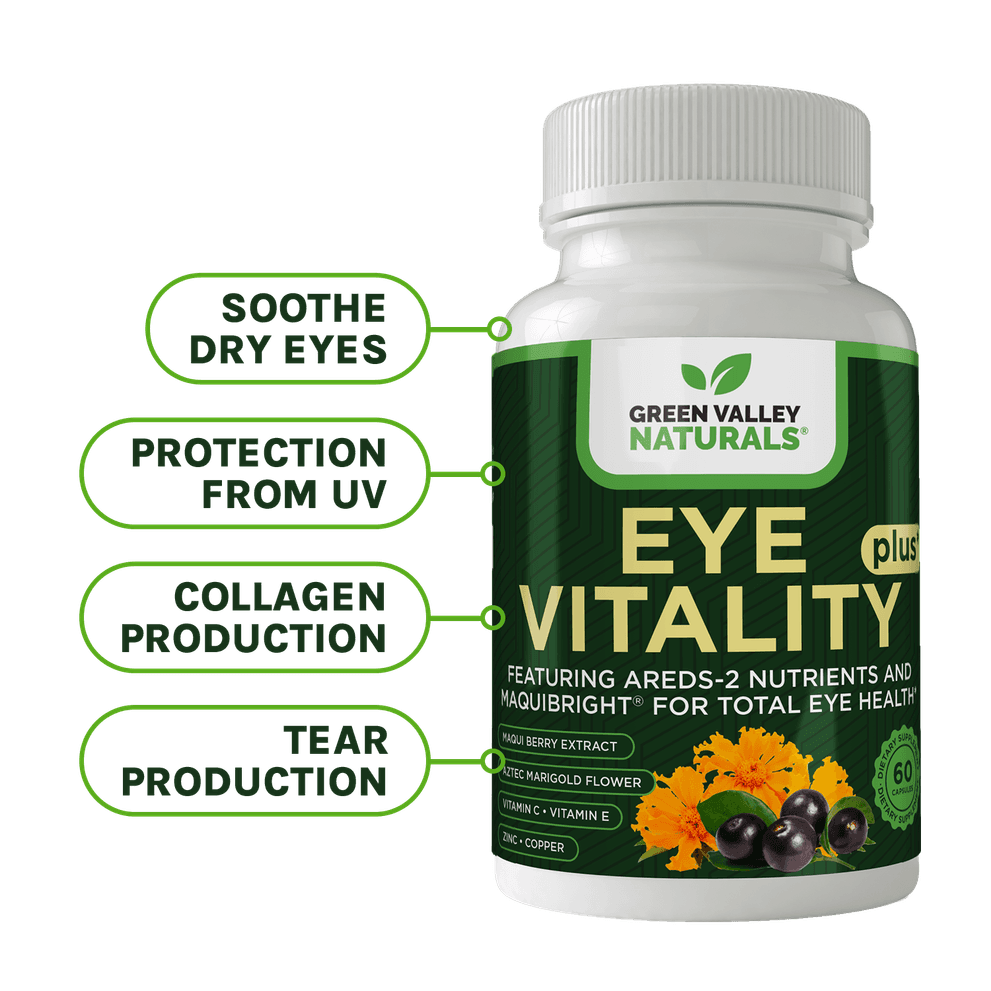
What if a simple color in your diet could shape how clearly you see the world? Hidden in leafy greens and bright produce are pigments that settle in the eye’s center, helping filter blue light and support everyday visual performance. One little-known member of this trio may be the missing piece. Curious which nutrients—and how to get enough?
Key Takeaways
The macula concentrates lutein, zeaxanthin, and meso-zeaxanthin to form macular pigment that helps filter blue light.
Consistent carotenoid intake supports antioxidant defenses and everyday visual performance (e.g., contrast and glare recovery).
Leafy greens, colorful produce, and smart supplementation (as advised by an eye-care pro) can help maintain macular pigment.
Your Eye’s “Yellow Shield”: Are You Feeding It?
As we age, maintaining the eye’s central-vision area—the macula—depends in part on nutrition. Research on specific dietary carotenoids shows they can support macular pigment density, help neutralize free radicals, and support visual performance (e.g., contrast sensitivity and glare recovery).
The macula is a tiny area near the center of the retina that allows us to have sharp central vision. It has a high concentration of photoreceptor cells that detect light and consume large amounts of oxygen. These factors make it vulnerable to damage by free radicals.
Free radicals can thin and break down macular tissue. When this happens, vision may be distorted in one or more ways.
- straight lines appear wavy
- faces look misshapen
- colors fade
- lights glare
- contrast sensitivity is impaired
- fine detail gets lost
These symptoms may progress until the victims totally lose vision in the center of their eyes. The number of Americans already affected is around 15 million. Because of the aging population, this is expected to double over the next decade or so.
Unfortunately, most people take their eyesight for granted.
Professor John Nolan, principal vision health investigator from the Waterford Institute of Technology (WIT), puts it this way: "People never believe they're actually going to lose their vision. But it's something that's a real possibility."
Protect Your Macular Health with Carotenoids
Fortunately, there's something we can all do to maintain good macular health even as we age.
There are four established risk factors for poor macular health. These are age, family history, smoking, and diet.
There's nothing you can do about the first two, but you can certainly abandon smoking and improve your diet.
Here’s what you need to do regarding food intake. . .
The macula contains a yellow pigment. This macular pigment (MP) filters out high-energy blue wavelength light before it hits the photoreceptors, thereby preventing damage and improving visibility.
But the density of this pigment drops with age. As it does so, its protective ability declines. The key to macular health lies in maintaining MP.
Out of the 50 carotenoids (plant pigments) found in food, only three make up the MP or macular pigment. These are lutein, zeaxanthin and meso-zeaxanthin.
The first two are obtained from eating leafy green vegetables and colorful fruits. Good sources are spinach, kale, collard greens, corn, zucchini, squash, orange peppers, kiwi fruit, grapes, orange juice and egg yolk.
Professor Jim Stringham, a lutein specialist from the University of Georgia, says you need at least 10 mg of lutein a day to maintain MP and eye health; that's like eating two large bowls of spinach. The professor has found, not surprisingly, that most of the people he's tested are deficient.
So while it's possible to get a high amount of these carotenoids from food sources alone, it's very hard to do in practice.
The Most Potent Protector - Meso-Zeaxanthin
MP density peaks in the center of the macula and then declines with increasing distance from it.
Meso-zeaxanthin – one of those three vital plant pigments -- is only located in the center. It has the highest antioxidant potential of the three carotenoids, because the center of the macula has the highest metabolic rate and the greatest potential for free radical damage.
That points to meso-zeaxanthin as the most important pigment for macula protection.
It's always been assumed that the body can make all the meso-zeaxanthin it needs from lutein. However, recent research from WIT found that some people have a central dip in MP, i.e., they are deficient in meso-zeaxanthin. This greatly increases their risk of age-related macular degeneration.
The researchers believe such people lack the enzyme needed to convert lutein to meso-zeaxanthin.
Meso-zeaxanthin has only been found in small amounts in fish skins. It doesn’t occur naturally in any other food, as far as researchers know, so relying on the diet to provide it is out of the question. When the WIT researchers provided a supplement containing meso-zeaxanthin to those with central dip, MP was rebuilt and vision enhanced.
Other research carried out at WIT demonstrates that supplementing with all three carotenoids gives a better macular health than supplementing with lutein and zeaxanthin alone.
According to Professor Nolan, "supplementation [is] key. At 60 you are at high risk of losing central vision, so we have to optimize nutrition."
Summary
The eye’s macula contains a protective yellow layer called macular pigment. Three dietary carotenoids—lutein, zeaxanthin, and meso-zeaxanthin—are naturally deposited there and help filter blue light, support antioxidant defenses, and maintain visual performance (including contrast sensitivity and glare recovery). Because these nutrients are not made by the body, they must come from food (leafy greens, colorful produce, egg yolks) or supplements. Consistent intake helps maintain macular pigment density over time.




